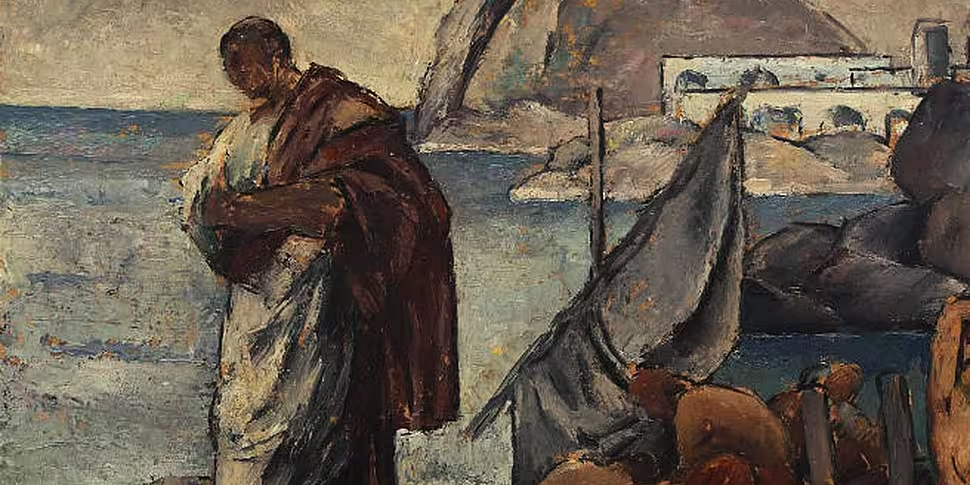There are a select few authors whose work forms the bedrock of Western Literature. Figures like Homer, Virgil, and Dante loom over history, their influence reaching centuries and millennia beyond their death. The great Roman poet Ovid ranks among these titans of writing thanks to his love poetry and epic account of classical mythology. There are few art forms that have not been changed and inspired in some way by Ovid and his ‘Metamorphoses’.
Born into a wealthy equestrian family in an Apennine valley east of Rome, Ovid’s early life followed the traditional course of someone of his background. He studied law and rhetoric in accordance with his father’s wishes and was appointed to minor public posts during his teens as a result. Ovid’s mind seemed to tend toward the emotional and artistic over the argumentative though. When his brother died Ovid resigned his posts, renounced law, and pursued life as a poet.
Augustus’ reign as the first Roman Emperor had just begun when Ovid began his life as a man of letters. The period of change between the fall of the Republic and Augustus’ rise to power had been marked by massive cultural and societal changes. The arts had become invigorated with the coffers of patrons who sought to shape the culture of the new Empire. While Ovid’s father disapproved of his teenage son’s decision to abandon law the surge in artistic support allowed Ovid to persevere as he came to the attention of other poets and patrons.
Over the next 25 years Ovid established himself as a poet of note, with most of his works focusing on the realms of love and eroticism. These works varied from tales of a relationship between Ovid and a woman named Corinna, the love lives of gods and mythical creatures, and even a ‘how to’ guide for men to seduce women and for women to rebuff these attempts. Though he was working in established styles and themes his innovations and humour made Ovid’s works popular and unique. One of his most important innovations during this time was the use of Amor, or love, as the focus in some of his poems; these were celebrations of love’s triumphs and not man’s.
 'The Myth of Io' as told by Ovid by Bartolomeo di Giovanni, circa 1490
'The Myth of Io' as told by Ovid by Bartolomeo di Giovanni, circa 1490
Though Ovid’s genius secured his legacy as one of Ancient Rome’s greatest writers it also brought woe in his own lifetime. In AD 8 the 51 year old poet was banished from Rome on the word of Augusts himself. Why exactly this master of poetry was sent to live out the rest of his days by the Black Sea is not known. According to Ovid himself it was the result of ‘a poem and a mistake’. These final years were the saddest of Ovid’s life. He lamented his isolation from Rome in poems and worried that he would be unable to finish his epic poem on the Roman calendar, ‘Fasti’, for lack of libraries.
While he was able to complete ‘Fasti’ before his death it was not to become the ‘Magnum Opus’ Ovid had envisioned; nor would any of his poetic accounts of love and its triumphs over the wills of mortals and gods. It was his ‘Metamorphoses’, an epic account of the myths of Greece and Rome, that would stand out as Ovid’s most famous work through history. This massive catalogue traced the ancient mythologies from the creation of the universe and the rise of the gods, right up to the death of Pythagoras and the deification of Julius Caesar.
Though Ovid had retold myths and used tales of the gods in some of his earlier love poetry, ‘Metamorphoses’ was a hugely experimental work. While it had many of the traits of an epic poem the changing themes and tone in ‘Metamorphoses’ distinguish it from the work of figures like Homer and make it hard to fully classify. Despite its experimental nature the poem proved popular during Ovid’s lifetime. This was probably of little comfort to the great poet though as the work was completed the year he was exiled.
Though Augusts died in AD 14 there was to be no homecoming for Ovid. He died three or four years later in Tomis and was buried in a nearby town. His works continued to be popular long after his death and enjoyed a resurgence of interest during the Middle Ages and Renaissance. ‘Metamorphoses’ stands as one of the most influential and important poems in history. Its legacy can be found in the work of writers like Shakespeare, Chaucer, Milton, and Dante while countless painters and sculptors have been inspired by the tales.
 'Scythians at the Tomb of Ovid' by Johann Heinrich Schönfeld, circa 1640
'Scythians at the Tomb of Ovid' by Johann Heinrich Schönfeld, circa 1640
Patrick and a panel of experts will be taking a look back at the life and poetry of Ovid. Join ‘Talking History’ as we assess the lasting legacy of this great Roman poet. Why might he have been banished? How important has his work been? And might ‘Metamorphoses’ be the poem with the greatest influence on the literature and art of Western civilisation?
Patrick also talked with Peter Marshall about the new collection, 'The Oxford Illustrated History of the Reformation', and some of the works featured in it. A full list of 'Talking History' book recommendations can be found here.
Continuing the 'History of Art Night School' Patrick talked with Francis Halsall about the Cubist movement and its impact on the art world. You can see the images and listen back to the discussion here.









